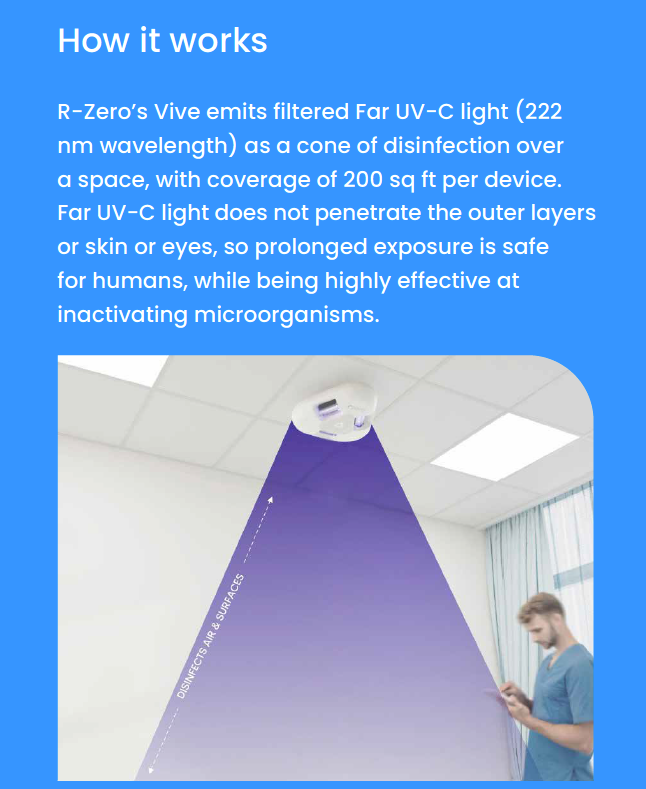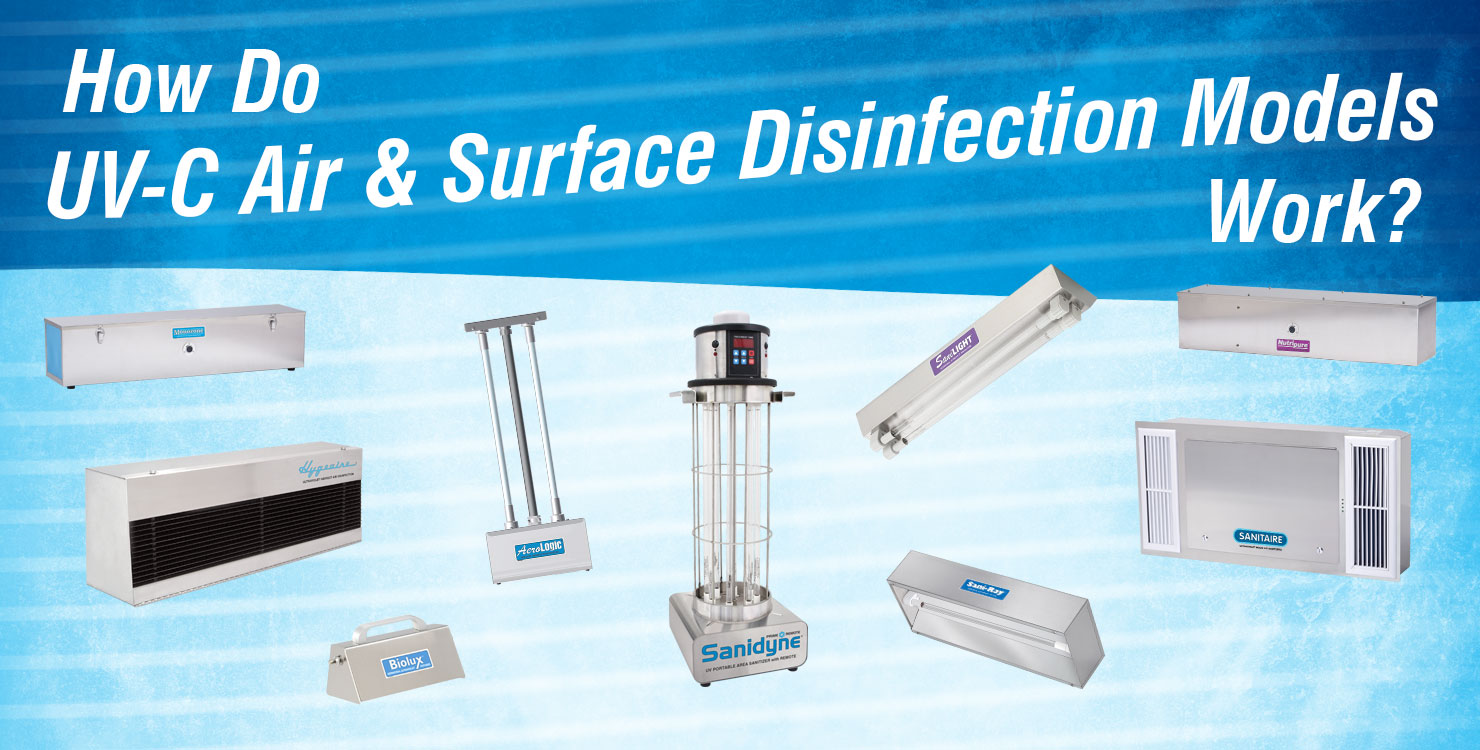UV Sanitation: The Cutting-Edge Innovation Transforming Hygiene Practices
In the world of sanitation techniques, one modern technology has actually arised as a game-changer: UV disinfection. With its ability to eliminate harmful pathogens, this innovative modern technology is transforming the way we come close to sanitation and hygiene. Yet just how does UV sanitation work, and what are the advantages it supplies? From healthcare settings to food processing, UV sanitation is making its mark in different markets. In this discussion, we will certainly check out the ins and outs of this transformative innovation and look ahead to its encouraging future.
How UV Disinfection Works
UV sanitation functions by using ultraviolet light to ruin or suspend microbes, providing a very reliable and chemical-free technique of hygiene. This technology uses the power of short-wavelength UV-C light, which is capable of damaging the DNA and RNA of bacteria, thus making them not able to duplicate and cause injury.
The process begins with the setup of UV sanitation systems, which are composed of UV lamps that send out UV-C light. These lights are purposefully positioned in areas where microbial contamination is an issue, such as water treatment plants, healthcare facilities, labs, and food handling centers.
When microorganisms are exposed to UV-C light, the photons permeate their cell wall surfaces and get to the DNA and RNA within. The high-energy UV-C photons disrupt the hereditary product by producing bonds between surrounding nucleotides, leading to the development of thymine dimers. These dimers stop the microorganisms from replicating, providing them harmless.
UV disinfection is highly effective versus a large range of bacteria, including germs, bloodsuckers, and infections. It is particularly reliable versus waterborne pathogens like E. coli, Giardia, and Cryptosporidium. Additionally, UV disinfection is a chemical-free method, eliminating the requirement for possibly damaging disinfectants and decreasing the danger of harmful disinfection by-products.
Advantages of UV Disinfection
UV disinfection offers numerous advantages in the area of sanitation, making it an extremely chosen technique for successfully eliminating dangerous microbes. Among the key advantages of UV disinfection is its capability to offer a chemical-free service. Unlike typical sanitation techniques that count on chemicals, UV sanitation makes use of ultraviolet light to destroy the DNA of microbes, rendering them unable to duplicate and trigger infections. This not only removes the requirement for possibly unsafe chemicals however also reduces the risk of chemical deposit on surface areas.

UV sanitation is likewise extremely versatile in its applications. It can be made use of in different settings, consisting of medical facilities, institutions, food handling centers, and water treatment plants. UV sanitation systems can be easily incorporated right into existing cleanliness methods, supplying an extra layer of defense versus infectious illness.
Along with its efficiency and flexibility, UV sanitation is likewise eco pleasant. It does not create any kind of hazardous by-products or deposits, making it a lasting and risk-free method for cleanliness - uv surface disinfection. UV disinfection calls for marginal maintenance and has a lengthy life-span, resulting in expense financial savings in the long run.
UV Sanitation in Health Care Setups
In healthcare setups, UV disinfection has emerged as a cutting-edge approach for efficiently removing harmful microbes. UV disinfection functions by giving off ultraviolet light at a particular wavelength that is dangerous to bacteria, infections, and various other microbes.
To start with, UV sanitation is a non-chemical method, making it an environmentally pleasant choice compared to typical sanitation techniques that often include making use of severe chemicals. Making use of UV light gets rid of the read here need for chemical disinfectants, reducing the danger of unsafe residue or chemical direct exposure to both clients and medical care employees.
Additionally, UV sanitation is highly efficient in killing a vast array of bacteria, including drug-resistant microorganisms such as MRSA and C. difficile. It gives a trustworthy and consistent sanitation process, making sure that all surfaces and equipment are extensively disinfected, even in hard-to-reach areas.
UV Disinfection in Food Handling
The application of UV sanitation extends past health care setups and discovers considerable worth in the realm of food handling. uv surface disinfection. UV disinfection modern technology is becoming progressively prominent in the food sector as a result of its capability to efficiently eliminate harmful pathogens and boost food safety and security
One of the primary advantages of UV disinfection in food handling is its capability to target a wide variety of microbes, consisting of mold and mildews, viruses, and microorganisms. By utilizing UV light at particular wavelengths, it is possible to disrupt the DNA and RNA of these pathogens, rendering them incapable to cause or duplicate damage. This innovation can be put on numerous phases of the food processing chain, consisting of surface area disinfection, tools sanitation, and water therapy.
UV disinfection gives a non-thermal and chemical-free method of sterilizing food products. Unlike conventional sanitation methods that depend on chemicals or warm, UV technology does not leave any residue or alter the preference, structure, or dietary value of the food. This makes it a suitable option for industries that need stringent adherence to high quality criteria.
Additionally, UV sanitation systems are simple to run and set up, calling for very little maintenance. They can be integrated into existing processing lines without triggering considerable interruptions to the manufacturing process. In addition, UV systems have a fast therapy time, permitting for continual handling and minimizing downtime.
The Future of UV Sanitation

One location where UV disinfection is expected to make considerable advancements remains in the field of healthcare. With the rise of antibiotic-resistant bacteria and the need for a lot more effective disinfection techniques, UV light has the possible to more information play an important function in minimizing healthcare-associated infections. UV disinfection systems can be utilized to sanitize surface areas, tools, and even the air in medical care centers, aiding to avoid the spread of hazardous pathogens and boost client safety.
An additional sector that could take advantage of improvements in UV sanitation innovation is the food market. UV light has already verified to be an effective technique for decontaminating food and lowering the danger of foodborne ailments. As modern technology enhances, we can expect to see much more affordable and efficient UV disinfection systems being implemented in food handling plants, guaranteeing that the food we eat is secure and complimentary from damaging microorganisms.
Verdict
Finally, UV disinfection is a cutting-edge technology that is changing cleanliness practices in health care settings and food handling. By utilizing UV light to kill or deactivate bacteria, it offers various benefits such as efficiency, efficiency, and safety and security. With recurring advancements in this area, UV disinfection holds fantastic possible for the future of sanitation, providing a sustainable and trustworthy solution for preserving tidy and sanitary environments.
UV disinfection is a chemical-free technique, eliminating the requirement for possibly hazardous anti-bacterials and minimizing the danger of harmful sanitation by-products.
Unlike traditional sanitation this contact form techniques that count on chemicals, UV disinfection makes use of ultraviolet light to damage the DNA of microorganisms, providing them unable to replicate and create infections. Unlike traditional disinfection techniques that depend on chemicals or warmth, UV technology does not leave any type of residue or alter the preference, appearance, or dietary value of the food. As technology enhances, we can expect to see much more affordable and efficient UV sanitation systems being carried out in food handling plants, making certain that the food we consume is risk-free and cost-free from unsafe microorganisms.
In conclusion, UV sanitation is a sophisticated innovation that is changing sanitation methods in healthcare setups and food processing.